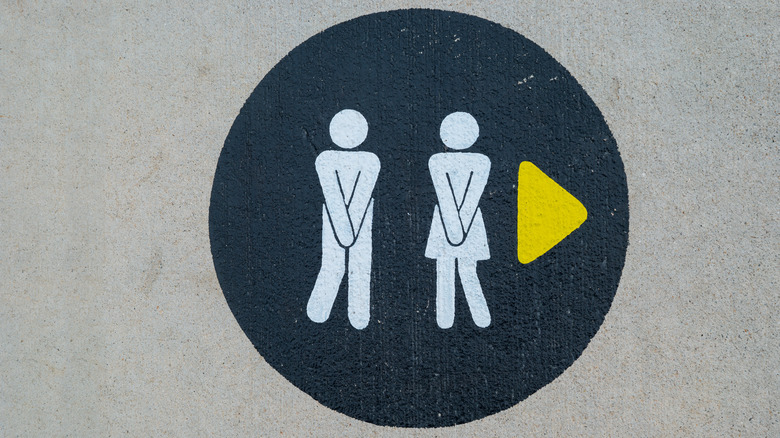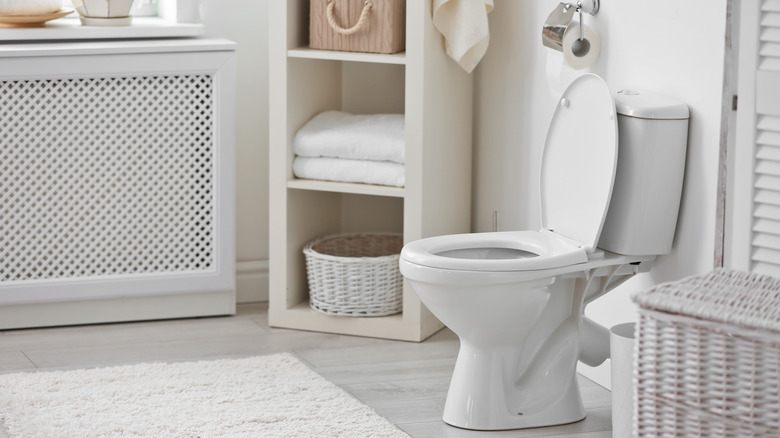This Is How Your Body Knows When You Need To Pee
Believe or not, the bladder is an expandable, sac-like organ that expands as it fills with urine and contracts when it's empty (via Healthline). On average, the healthy adult bladder can hold around 2 cups, or 32 ounces, of urine in total. However, your bladder is technically considered full when it contains anywhere between 16 and 24 ounces of liquid. Fortunately, you'll start to feel the urge to pee long before it's actually full.
That's because there's essentially an invisible fill line in your bladder and when your urine reaches that line, your bladder sends a signal to your brain telling you that you need to pee. This usually occurs when your bladder is at least a quarter of the way full. While it isn't necessary for you to pee as soon as you feel the need to, you shouldn't hold it in for too long. Holding in your pee for more than 10 hours at a time may cause you to have an accident.
Can looking at your toilet make you have to pee?
The urge to pee can be affected by other factors, however. For instance, it is not uncommon to feel the sudden and immediate urge to pee when you come home from work or walk in the bathroom and see your toilet (via Shape). This phenomenon is known as latchkey incontinence. While latchkey incontinence can affect people with poor bladder control, it more commonly affects people whose bladders are already full and have already felt the urge to pee.
For most people, this has less to do with your bladder filling up and more to do with associating your home and toilet with relaxation and urination. "The mere glance of an object that we relate to an action can jumpstart the brain's process to a more urgent need to experience it—all subconsciously," psychotherapist Dr. Ginnie Love told Shape. In other words, that sudden need to go feeling you get as you walk in your bathroom is a conditioned response to stimuli commonly associated with peeing.


